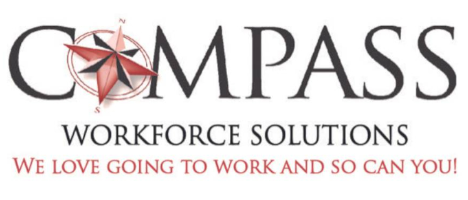In our current fast-paced and often unpredictable business environment, our people  are our greatest asset—but managing our company’s HR practices adds one more spinning plate to our balancing act. With limited time and resources, crucial processes can slip through the cracks, leaving our business exposed to compliance risks and missed opportunities. That’s where an HR self-audit comes to save the day. Think of it as our secret weapon: a proactive way to fine-tune our HR practices, align them with our business goals, and build a stronger, more resilient team. Ready to take charge? Key focus areas to make your HR self-audit a game-changer.
are our greatest asset—but managing our company’s HR practices adds one more spinning plate to our balancing act. With limited time and resources, crucial processes can slip through the cracks, leaving our business exposed to compliance risks and missed opportunities. That’s where an HR self-audit comes to save the day. Think of it as our secret weapon: a proactive way to fine-tune our HR practices, align them with our business goals, and build a stronger, more resilient team. Ready to take charge? Key focus areas to make your HR self-audit a game-changer.
- Start with the Basics: Compliance – Compliance is the foundation of any HR function. With all the employment-related regulations and the speed with which they change, it’s not an easy feat to keep everything up to snuff. We often find businesses falling short in areas such as employee classification, payroll practices, proper and up-to-date recordkeeping, and legally compliant workplace policies and practices. As we start a new year, as business and HR leaders, this is a good time to review, at a minimum, our employee files, our policies and procedures and our payroll practices. A clean compliance record not only helps us avoid penalties; it also helps us build trust with our workforce.
- Evaluate Talent Management Practices – When juggling multiple business pressures and demands, we often miss the opportunity to critically examine key talent management practices such as recruitment, onboarding, and performance management. Are our job descriptions inclusive and reflective of current business needs? Do we have a process in place to make our new hires feel welcomed, and do we set them up for success? Is our performance management system set up to create and reinforce a culture of feedback based on clear metrics and behavioral expectations? Sound talent management practices allow us to hire and onboard the right talent for our business and manage employees in a way that builds capacity, strengthens capabilities, and delivers business results.
- Examine Employee Engagement and Retention – The loss of even one team member can be detrimental, especially to small and mid-sized businesses. Reinforcing a work environment where our employees have a sense of value and purpose within our company is critical to their satisfaction, engagement, and retention. Take a moment to take stock of HR practices related to compensation, career and professional development, recognition, communication, and leadership. Are they appropriate and relevant to our workforce? Do they provide clarity around what success looks like? Do they create an environment where our employees feel supported, respected, valued and cared for? And what systems do we have in place to keep the pulse on our employee base?
- Assess Strategic Alignment – This is where we take a step back and ask the broader, more impactful question: Are our HR systems and practices in support of and contributing to our business outcomes and goals, or are they working against us? How is HR integrated within our overall business planning process? How do we track and analyze HR’s impact on our business results? Are our policies and practices proactively designed to promote the culture and work environment we want and need to achieve our goals? Do we have the dedicated resource(s) with the required HR expertise to develop, implement, and support consistent and relevant HR policies and practices?
Pitfalls to Avoid When Conducting an HR Self-Audit Regardless of whether we decide to embark on a full-fledged or a targeted HR self-audit, a couple of watchouts include:
- Neglecting employee input: As we audit our HR function, employee input can bring clarity or surface issues not on our radar.
- Failing to follow through: Identifying gaps is only half the battle. Developing and prioritizing clear action plans based on urgency and impact is ultimately where our efforts will make a difference to our business.
- Trying to do too much at once: In an environment where we are already constrained by factors such as time, money, and other resources, it’s critical to be realistic in what we can take on. Focusing on a few key areas to ensure meaningful progress is far better in terms of our ability to deliver to the business.
Ready to Take On An HR Self-Audit? Join Our HR Roadmap Course Ready to take your HR function to the next level? Our HR Roadmap Course, starting in February 2025, is designed for small and midsize businesses who want to build robust HR strategies without overburdening their teams. This course will guide you step-by-step in creating an actionable HR roadmap tailored to your organization’s needs. Don’t miss this opportunity to:
- Learn best practices from experienced HR practitioners.
- Gain practical tools to streamline your HR processes.
- Network with other business leaders.
Reserve your spot today and ensure your HR strategy drives meaningful business impact in 2025 and beyond! An HR self-audit is more than just a box-checking exercise—it’s a critical investment in the success and sustainability of your business. By focusing your efforts on compliance, talent management, and strategic alignment, you can set the foundation for growth while avoiding common pitfalls. And with the right guidance, like our HR Roadmap Course, you can transform your HR function into a strategic powerhouse.








